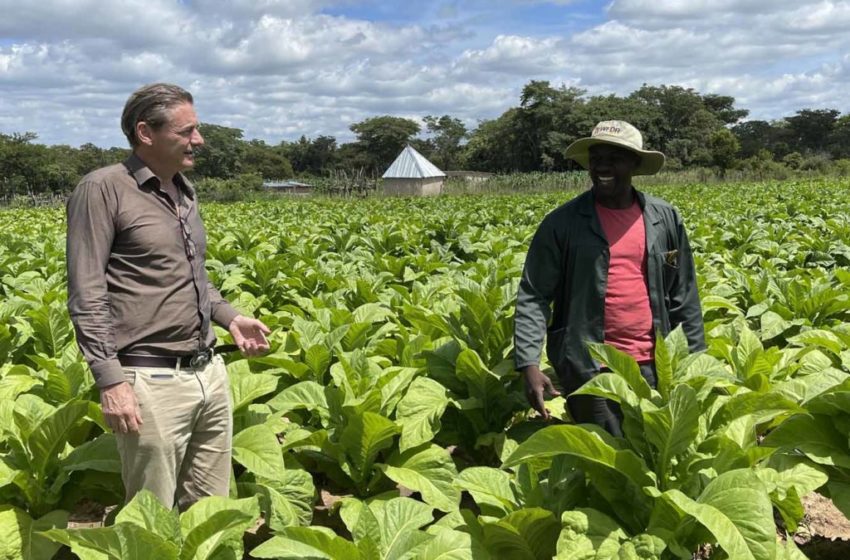Cavendish Plans More Shisha Auctions
- Featured Leaf News This Week
- May 5, 2023
- 0
- 3 minutes read

Koen Monkau (left) | Image: Cavendish Lloyd

Cavendish Lloyd Zimbabwe (CLZ) plans to hold two more shisha auction sales, according to NewsDay.
CLZ is the first company to hold an auction sale of shisha tobacco.
“This tobacco has extremely low nicotine,” said Koen Monkau, CEO and founder of Cavendish. “So our target with the farmers is to grow a maximum nicotine crop of 1 percent while the traditional crop that you see is traditionally anywhere between 2 percent and 3 percent with sugars ranging from, let’s say, 14 percent to 20 percent. This is less than 1 percent nicotine and up to 30 percent sugar.”
“We are going to do three or four (auction sales) in total, and this is number two,” he added.
Cavendish sold between 60 bales and 80 bales on the first day at auction, each bale weighing between 90 kg and 100 kg. Sales increased to 300 bales on the second auction day.
The company is working with about 13 farmers who supply the crop.
“The cost of growing is about half that of the traditional crop. If you look at a commercial farmer in Zimbabwe, the cost of growing per hectare of the traditional tobacco is anything between US$12,000 and $13,000, and this (shisha) is about $6,000 to $7,000, so it is about half the cost of growing. However, the yield per hectare is slightly less,” Monkau said.
“So, when you look at the return on investment for the farmer, it’s definitely much better than the traditional crop.”
Cavendish is targeting the European and Arab markets with the final product. “The original source of this style of tobacco is Europe, but from there, it’s sold worldwide. So we are basically competing with countries such as France, Poland and Germany. These are the major producers of this style of tobacco in Europe. And we see that there is stabilization or a slight decline in what they are growing for whatever reasons, so that means there is an opening for us to enter that market as well,” Monkau said.
“For the last two seasons, there has been a shortage of this style of tobacco. Traditionally, most of this tobacco is being used in the Middle East because that is where most shisha is coming from. But what we see now, even in Africa or Zimbabwe, recently, a small manufacturer started to make a small product that is going into the water pipe.”
